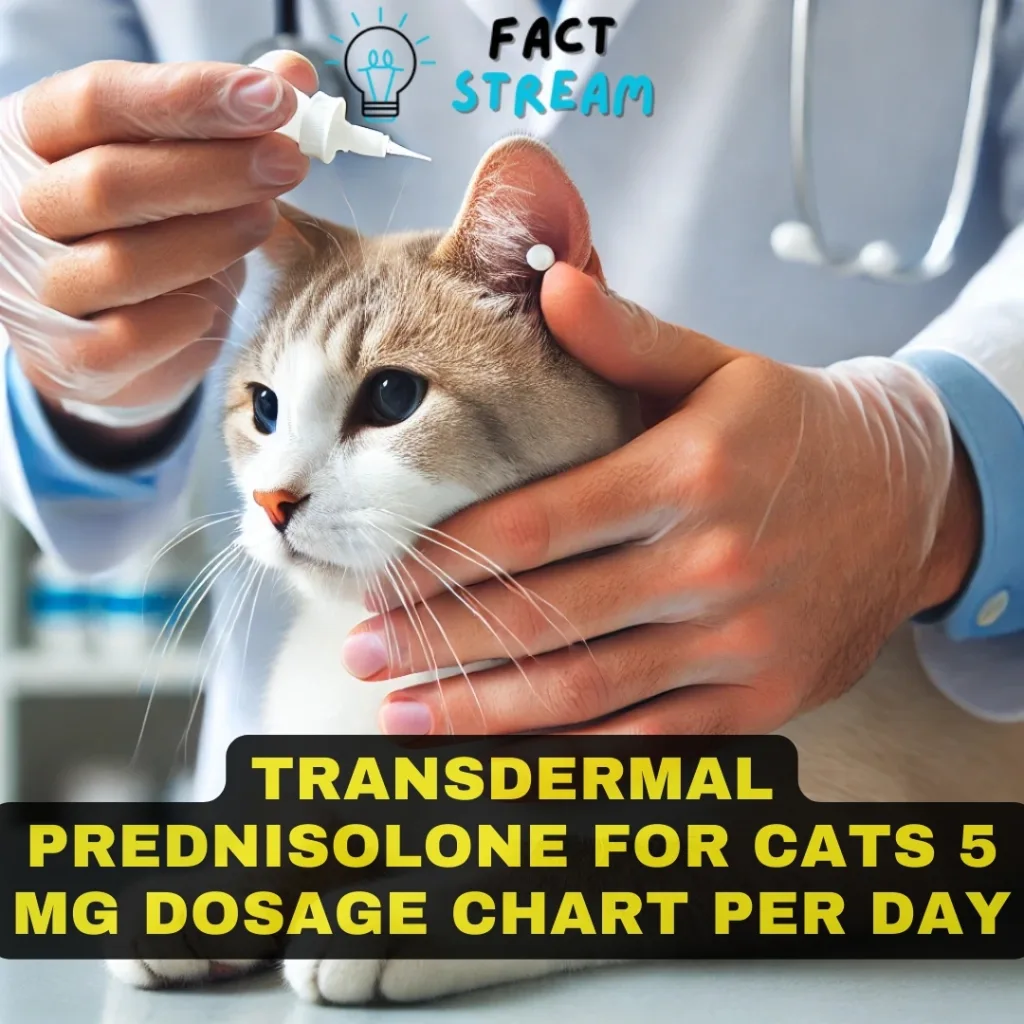Transdermal Prednisolone for Cats 5 mg Dosage Chart Per Day: What Cat Owners Need to Know?
Prednisolone is a common medication prescribed for cats dealing with various conditions, from inflammation to autoimmune disorders. It’s a powerful tool, but it’s typically given orally or by injection. While transdermal application sounds promising, there’s limited research on its effectiveness, particularly when considering specific dosages like transdermal prednisolone for cats 5 mg dosage chart per day. Let’s break down what we know and what’s important to discuss with your veterinarian.
Why is Prednisolone Prescribed for Cats?
Prednisolone is a synthetic corticosteroid, a type of drug that acts like cortisol, a natural hormone in your cat’s body. It’s often used for:
- Reducing inflammation: This is especially helpful for conditions like itchy skin (allergic dermatitis), arthritis, or inflammatory bowel disease (IBD).
- Suppressing the immune system: This can be necessary for managing autoimmune diseases where the body mistakenly attacks its own cells.
- Treating certain cancers: Prednisolone can play a role in managing lymphoma or multiple myeloma in cats.
Prednisolone vs. Prednisone: What’s the Difference for Cats?
It’s critical to remember that cats are usually prescribed prednisolone, NOT prednisone. While both are corticosteroids, cats don’t metabolize prednisone effectively. Their livers struggle to convert it into the active form, prednisolone, making it much less effective for them.
The Challenge of Transdermal Prednisolone
The idea of applying medication through the skin seems appealing for cats who hate pills or injections. However, scientific evidence supporting transdermal prednisolone for cats is limited, and there’s no established dosage chart for a 5 mg per day application.
One study found that a single 5 mg transdermal dose didn’t result in measurable levels of prednisolone in the cat’s bloodstream. But this doesn’t mean transdermal application is impossible. Further research is needed to understand if different formulations or prolonged application could be effective.
Why Dosage Charts Are Crucial
Dosage charts are essential for several reasons:
- Ensuring safety: They help veterinarians determine the appropriate amount of medication for your cat’s weight and condition, minimizing the risk of overdose or side effects.
- Maximizing effectiveness: The correct dose ensures the medication can work properly to treat the underlying condition.
- Tracking progress: Dosage charts allow for adjustments over time, especially for long-term treatment, to find the lowest effective dose and minimize potential side effects.
Always Consult Your Veterinarian
The information here should not replace professional veterinary advice. If you’re considering transdermal prednisolone for your cat, here’s what you should discuss with your vet:
- Is transdermal prednisolone an appropriate option for my cat’s specific condition?
- Are there compounded transdermal formulations of prednisolone available, and what are the associated risks and benefits?
- What are the potential side effects of prednisolone, regardless of administration method, and how can we monitor for them?
- What are the alternatives to prednisolone if transdermal application isn’t suitable or effective?
Remember, your veterinarian is your best resource for making informed decisions about your cat’s health.


